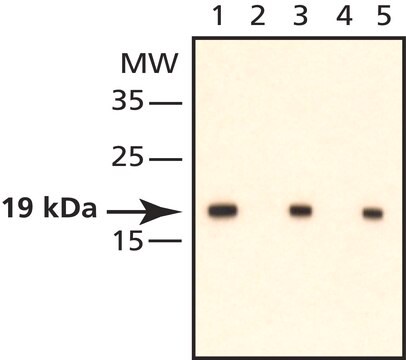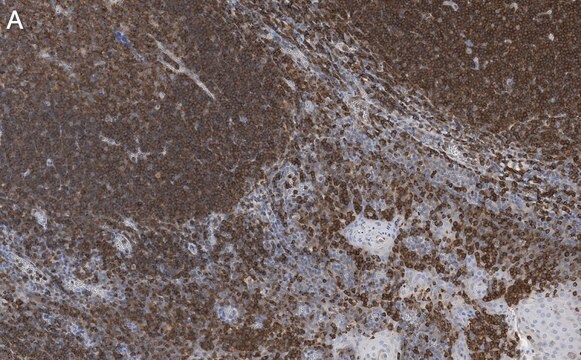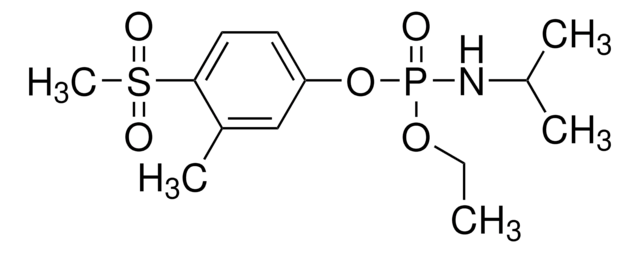Wichtige Dokumente
C8736
Anti-Cofilin antibody produced in rabbit
IgG fraction of antiserum, buffered aqueous solution
Synonym(e):
Anti-CFL, Anti-HEL-S-15, Anti-cofilin
About This Item
IF
WB
microarray: suitable
western blot: 1:10,000 using using whole extracts of human A-431, rat PC-12, mouse NIH/3T3, and dog MDCK kidney cells
Empfohlene Produkte
Biologische Quelle
rabbit
Qualitätsniveau
Konjugat
unconjugated
Antikörperform
IgG fraction of antiserum
Antikörper-Produkttyp
primary antibodies
Klon
polyclonal
Form
buffered aqueous solution
Mol-Gew.
antigen ~19 kDa
Speziesreaktivität
canine, rat, human, mouse
Methode(n)
indirect immunofluorescence: 1:1,000 using using mouse NIH/3T3 fibroblasts
microarray: suitable
western blot: 1:10,000 using using whole extracts of human A-431, rat PC-12, mouse NIH/3T3, and dog MDCK kidney cells
UniProt-Hinterlegungsnummer
Versandbedingung
dry ice
Lagertemp.
−20°C
Posttranslationale Modifikation Target
unmodified
Angaben zum Gen
human ... CFL1(1072) , CFL2(1073)
mouse ... Cfl1(12631) , Cfl2(12632)
rat ... Cfl1(29271) , Cfl2(366624)
Verwandte Kategorien
Allgemeine Beschreibung
Spezifität
Immunogen
Anwendung
- for immunostaining of chick neurons. It is used as a primary antibody
- for western blotting of protein isolated from mouse hippocampi cells, rat brain samples, human acute lymphoblastic T-cell line, human brain samples, head and neck squamous cell carcinoma cell line, HEK293T cells and renal epithelial cell lines
- for immunofluorescence studies in tissue samples from human brain
Biochem./physiol. Wirkung
Physikalische Form
Lagerung und Haltbarkeit
Haftungsausschluss
Sie haben nicht das passende Produkt gefunden?
Probieren Sie unser Produkt-Auswahlhilfe. aus.
Empfehlung
Ähnliches Produkt
Lagerklassenschlüssel
10 - Combustible liquids
WGK
WGK 1
Flammpunkt (°F)
Not applicable
Flammpunkt (°C)
Not applicable
Hier finden Sie alle aktuellen Versionen:
Besitzen Sie dieses Produkt bereits?
In der Dokumentenbibliothek finden Sie die Dokumentation zu den Produkten, die Sie kürzlich erworben haben.
Unser Team von Wissenschaftlern verfügt über Erfahrung in allen Forschungsbereichen einschließlich Life Science, Materialwissenschaften, chemischer Synthese, Chromatographie, Analytik und vielen mehr..
Setzen Sie sich mit dem technischen Dienst in Verbindung.








